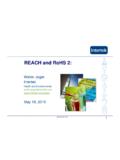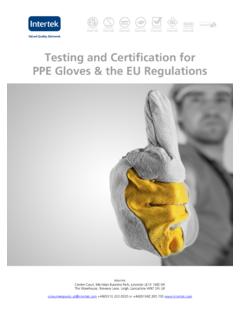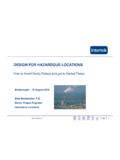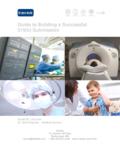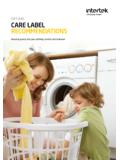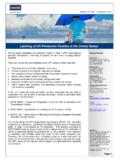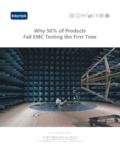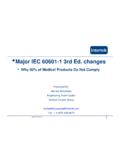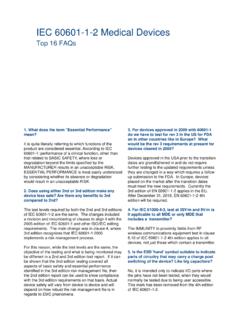Transcription of Understanding the Machinery Directive (2006/42/EC)
1 Intertek 70 Codman Hill Road Boxborough, MA 01719 1-800-WORLDLAB Understanding the Machinery Directive ( 2006 /42/EC) Understanding the Machinery Directive ( 2006 /42/EC) Index 1 Brief 2 Overview: The Machinery Directive ( 2006 /42/EC).. 2 Key Changes to the 3 1) Scope ..3 2) Exclusions .. 4 3) Partly Completed Machinery .. 5 4) Radiation & hazardous Substances .. 6 5) Notified Bodies .. 6 6) Surveillance & Enforcement .. 7 7) Under conditions that can reasonably be foreseen .. 8 8) Annex IV .. 9 9) Lifting Equipment .. 10 10) Safe Transportation not just handling .. 11 11) Requirements on Ergonomics, Operating Positions and Seating .. 11 12) Instruction Documentation .. 12 13) Symbols & 15 Who is affected by this Directive ?.. 16 16 Conformity 16 Conformity Assessment 16 Requirements: The Technical 18 Requirements: The EC Declaration of 18 19 Appendix: Process Flow Chart Introduction In this paper we will look at the Machinery Directive ( 2006 /42/EC), and discuss the differences between 2006 /42/EC and its predecessor 98/37/EC.
2 We ll also look at routes to ensure ongoing conformity. 1 Understanding the Machinery Directive ( 2006 /42/EC) Brief History In 1985, a series of New Approach Principles were introduced into the European Community (EC) that would enable the free movement of goods across the region. They laid out a set of market parameters for the EC, including Essential Health and Safety Requirements for workers in the Community and minimum product requirements for goods going on sale in the region. From these principles, a number of specific Directives were developed to govern particular types of products and operating characteristics, including: Low Voltage Directive EMC Directive Machinery Directive ATEX (Explosive Atmospheres) Pressure Equipment Directive Gas Appliances Directive The Directives establish specific minimum performance requirements, and products that meet these are said to have a presumption of conformity . This can be validated through product assessment against harmonized Standards, either by the party that plans to sell its product in the EU or on their behalf by a third-party assessment organization such as an accredited certification body.
3 Products that meet the essential requirements of the Directives that govern them can be placed on the market, but a Declaration of Conformity must be made. A technical file for the product must be available in the EU and the product must carry the mandated CE Marking, as required by the Directives. Some of the Directives, ATEX and Gas, also require that CE Marking for certain product types is supported by mandatory certification from a qualified body. On these products, the CE mark is accompanied by the Notified Body number below the CE symbol. Compliance with these regulations is then enforced by surveillance activities carried out by member states. Now, the New Approach Directives are under review, particularly relating to the essential requirements of the harmonized Standards, the role of third party certification marks, and the role they play in the compliance process. The goal is to strengthen market surveillance activities and enforcement.
4 More information on the New Approach Directives can be found at: Overview: The Machinery Directive ( 2006 /42/EC) 2 Understanding the Machinery Directive ( 2006 /42/EC) The Directive has been put in place because: The Machinery sector is an important part of the engineering industry and is one of the industrial mainstays of the Community economy. The social cost of the large number of accidents caused by the use of Machinery can be reduced by inherently safe design and construction of Machinery and by proper installation and maintenance (Paragraph 2) Article 2 of the Directive specifies the products that the Directive applies to: o an assembly, fitted with or intended to be fitted with a drive system other than directly applied human or animal effort, consisting of linked parts or components, at least one of which moves, and which are joined together for a specific application o an assembly referred to in the first indent, missing only the components to connect it on site or to sources of energy and motion, o an assembly referred to in the first and second indents, ready to be installed and able to function as it stands only if mounted on a means of transport, or installed in a building or a structure, o assemblies of Machinery referred to in the first, second and third indents or partly completed Machinery o an assembly of linked parts or components, at least one of which moves and which are joined together, intended for lifting loads and whose only power source is directly applied human effort.
5 In all cases relevant provisions of other EC Directives where these are appropriate (EMC, ATEX etc) must be taken into account to achieve full compliance with the Directive including Health and Safety requirements (as indicated in paragraph 14) Directive 2006 /42/EC replaces 98/37/EC adoption 29th June 2006 2006 /42/EC comes into force on 29th December 2009, with very limited exceptions* Old Directive repealed - NO TRANSITION PERIOD* In the UK it is adopted under the new Machinery Regulations 2008 (replacing Supply of Machinery (Safety) Regulations 1992 (SI 1992/3073 and amendments)) * Cartridge-operated fixing and other impact Machinery , which were previously excluded Transition to 29th June 2011 Key Changes to the Directive Recent changes to the Directive can be considered comprehensive as they encompass a modified range of Machinery . The changes consider product design as well as 3 Understanding the Machinery Directive ( 2006 /42/EC) construction, and they specify particular aspects of the required associated documentation needed for conformity.
6 Even on-going surveillance and the role of Notified Bodies is explored further. The key changes are as follows: 1) Scope Previously the scope of Directive covered: Machinery Interchangeable equipment Safety components Lifting accessories Removable mechanical transmission devices The Directive was extended to include: Chains, ropes and webbings Partly completed Machinery 2) Exclusions In the previous version of the Machinery Directive 98/37/EC, an extensive list of equipment was excluded from its scope. In 2006 /42/EC several of these have been removed and others clarified. Several new items have been added as well. The exclusion list now contains: Fairground/amusement park equipment Machinery for nuclear purposes Agricultural and forestry tractors* Motor vehicles and their trailers covered by Directive 70/156/EEC of 6 February 1970* 2 or 3 wheeled motor vehicles covered by Directive 2002/24/EC of 18 March 2002* Motor vehicles intended for competition Means of transport by air, water or rail* Seagoing vessels and mobile offshore units Machinery designed for military or police purposes Mine Winding Gear Machinery intended to move performers during artistic performances *Equipment mounted on the excluded types of transportation however is NOT excluded from the scope of the Directive .
7 Exclusions include: 4 Understanding the Machinery Directive ( 2006 /42/EC) Safety components intended to be used as spare parts to replace identical components and supplied by the manufacturer of the original Machinery Weapons, including firearms Machinery specifically designed and constructed for research purposes for temporary use in laboratories Electrical and electronic products falling under Directive 73/23/EEC of 19 February 1973 (including household appliances, ordinary office Machinery , low voltage switchgear and control gear)** High Voltage Switchgear and control gear High Voltage Transformers ** This equipment is specifically covered by the Low Voltage Directive 2006 /95/EC Machines powered by human effort are not specifically excluded, nor are medical devices but the latter are already covered by the Medical Devices Directive 93/42/EEC. 3) Partly Completed Machinery Directive 2006 /42 EC makes provisions for partially completed Machinery in a procedure that is outlined in Article 13 Procedure for partly completed Machinery 1.
8 The manufacturer of partly completed Machinery or his authorized representative shall, before placing it on the market, ensure that: (a) the relevant technical documentation described in Annex VII, part B is prepared; (b) assembly instructions described in Annex VI are prepared; (c) a declaration of incorporation described in Annex II, part 1, Section B has been drawn up. 2. The assembly instructions and the declaration of incorporation shall accompany the partly completed Machinery until it is incorporated into the final Machinery and shall then form part of the technical file for that Machinery . ANNEX VI also makes a requirement for assembly instructions for partly completed Machinery . The assembly instructions for partly completed Machinery must contain a description of the conditions which must be met with a view to correct incorporation in the final Machinery , so as not to compromise safety and health. 5 Understanding the Machinery Directive ( 2006 /42/EC) The assembly instructions must be written in an official Community language acceptable to the manufacturer of the Machinery in which the partly completed Machinery will be assembled, or to his authorized representative.
9 Risk assessment documentation should be included in the technical file. Declaration of incorporation and assembly instructions for partly completed Machinery incorporated into Machinery are now required. 4) Radiation & hazardous Substances In the Directive , the sections governing the risk to operators from both ionizing and non-ionizing radiation, as well as hazardous substances are significantly clearer and more extensive than those of its predecessor. They read: Radiation Undesirable radiation emissions from the Machinery must be eliminated or be reduced to levels that do not have adverse effects on persons. Any functional ionizing radiation emissions must be limited to the lowest level which is sufficient for the proper functioning of the Machinery during setting, operation and cleaning. Where a risk exists, the necessary protective measures must be taken. Any functional non-ionizing radiation emissions during setting, operation and cleaning must be limited to levels that do not have adverse effects on persons.
10 Emissions of hazardous materials and substances Machinery must be designed and constructed in such a way that risks of inhalation, ingestion, contact with the skin, eyes and mucous membranes and penetration through the skin of hazardous materials and substances which it produces can be avoided. Where a hazard cannot be eliminated, the Machinery must be so equipped that hazardous materials and substances can be contained, evacuated, precipitated by water spraying, filtered or treated by another equally effective method. Where the process is not totally enclosed during normal operation of the Machinery , the devices for containment and/or evacuation must be situated in such a way as to have the maximum effect. 5) Notified Bodies Article 14 on the role of Notified Bodies defines the roles and responsibilities that a Notified Body plays in the conformity and surveillance process. One particular section of importance reads: 6 Understanding the Machinery Directive ( 2006 /42/EC) 2.
